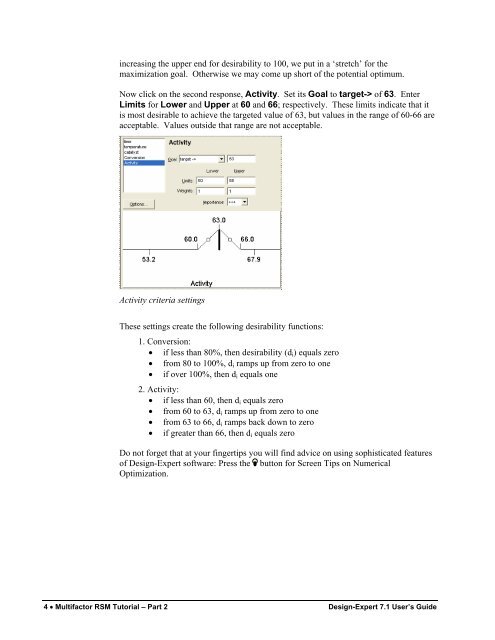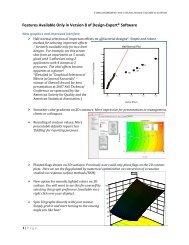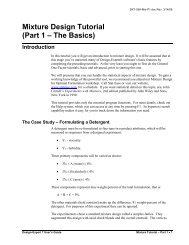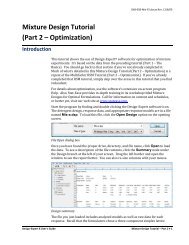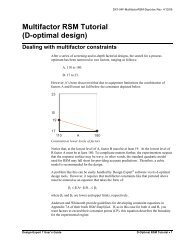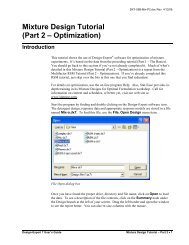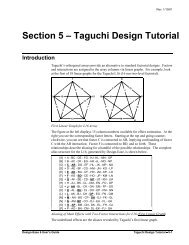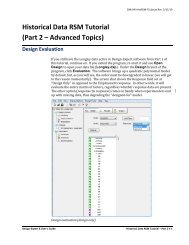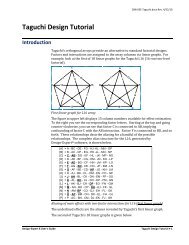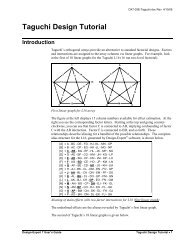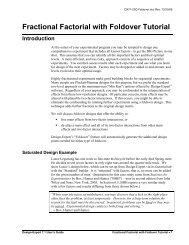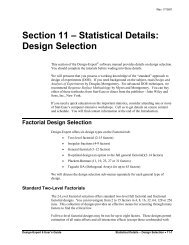DX7 Tutorial - Multifactor RSM - Part 2 - Optimization - Statease.info
DX7 Tutorial - Multifactor RSM - Part 2 - Optimization - Statease.info
DX7 Tutorial - Multifactor RSM - Part 2 - Optimization - Statease.info
You also want an ePaper? Increase the reach of your titles
YUMPU automatically turns print PDFs into web optimized ePapers that Google loves.
increasing the upper end for desirability to 100, we put in a ‘stretch’ for the<br />
maximization goal. Otherwise we may come up short of the potential optimum.<br />
Now click on the second response, Activity. Set its Goal to target-> of 63. Enter<br />
Limits for Lower and Upper at 60 and 66; respectively. These limits indicate that it<br />
is most desirable to achieve the targeted value of 63, but values in the range of 60-66 are<br />
acceptable. Values outside that range are not acceptable.<br />
Activity criteria settings<br />
These settings create the following desirability functions:<br />
1. Conversion:<br />
• if less than 80%, then desirability (di) equals zero<br />
• from 80 to 100%, di ramps up from zero to one<br />
• if over 100%, then di equals one<br />
2. Activity:<br />
• if less than 60, then di equals zero<br />
• from 60 to 63, di ramps up from zero to one<br />
• from 63 to 66, di ramps back down to zero<br />
• if greater than 66, then di equals zero<br />
Do not forget that at your fingertips you will find advice on using sophisticated features<br />
of Design-Expert software: Press the button for Screen Tips on Numerical<br />
<strong>Optimization</strong>.<br />
4 • <strong>Multifactor</strong> <strong>RSM</strong> <strong>Tutorial</strong> – <strong>Part</strong> 2 Design-Expert 7.1 User’s Guide


